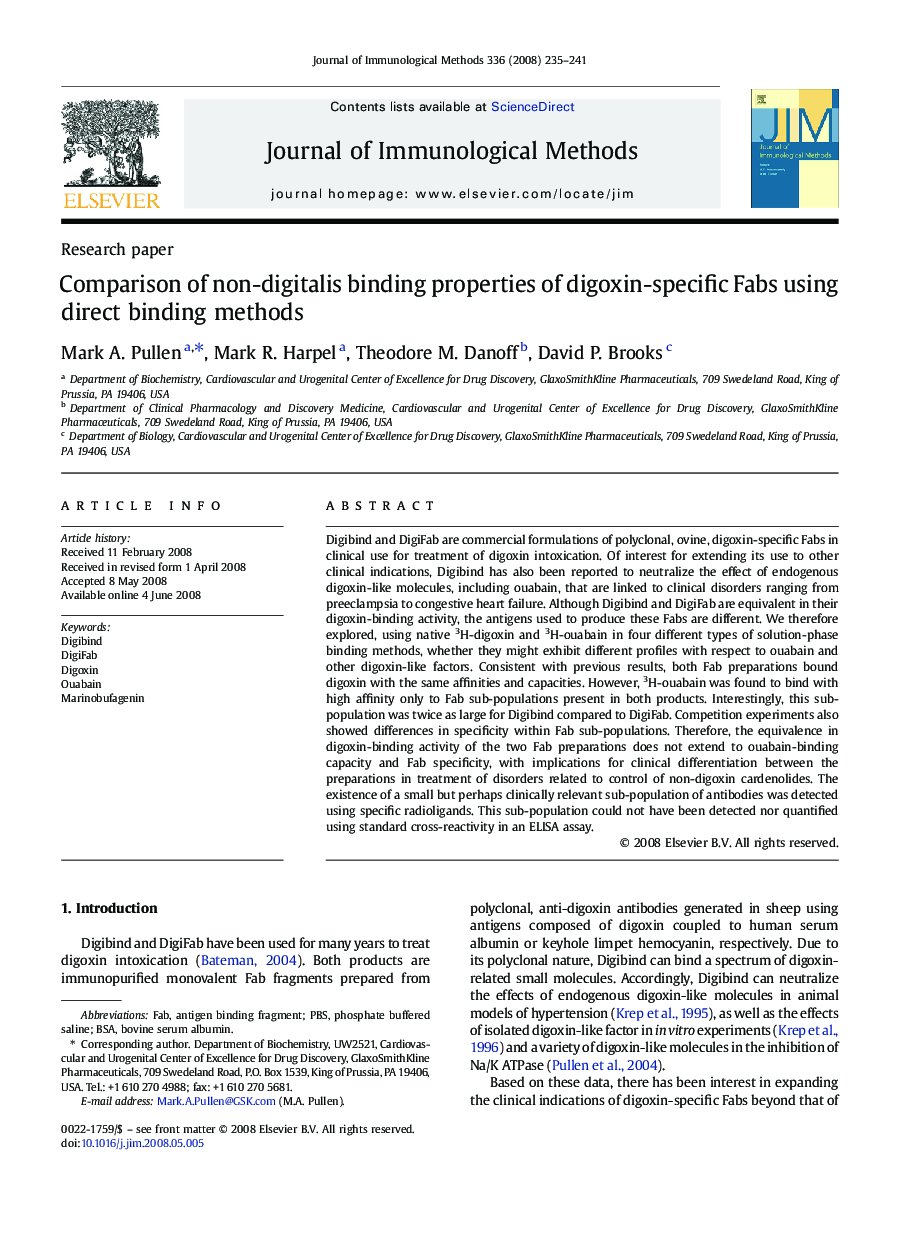| Article ID | Journal | Published Year | Pages | File Type |
|---|---|---|---|---|
| 10889338 | Journal of Immunological Methods | 2008 | 7 Pages |
Abstract
Digibind and DigiFab are commercial formulations of polyclonal, ovine, digoxin-specific Fabs in clinical use for treatment of digoxin intoxication. Of interest for extending its use to other clinical indications, Digibind has also been reported to neutralize the effect of endogenous digoxin-like molecules, including ouabain, that are linked to clinical disorders ranging from preeclampsia to congestive heart failure. Although Digibind and DigiFab are equivalent in their digoxin-binding activity, the antigens used to produce these Fabs are different. We therefore explored, using native 3H-digoxin and 3H-ouabain in four different types of solution-phase binding methods, whether they might exhibit different profiles with respect to ouabain and other digoxin-like factors. Consistent with previous results, both Fab preparations bound digoxin with the same affinities and capacities. However, 3H-ouabain was found to bind with high affinity only to Fab sub-populations present in both products. Interestingly, this sub-population was twice as large for Digibind compared to DigiFab. Competition experiments also showed differences in specificity within Fab sub-populations. Therefore, the equivalence in digoxin-binding activity of the two Fab preparations does not extend to ouabain-binding capacity and Fab specificity, with implications for clinical differentiation between the preparations in treatment of disorders related to control of non-digoxin cardenolides. The existence of a small but perhaps clinically relevant sub-population of antibodies was detected using specific radioligands. This sub-population could not have been detected nor quantified using standard cross-reactivity in an ELISA assay.
Keywords
Related Topics
Life Sciences
Biochemistry, Genetics and Molecular Biology
Biotechnology
Authors
Mark A. Pullen, Mark R. Harpel, Theodore M. Danoff, David P. Brooks,
